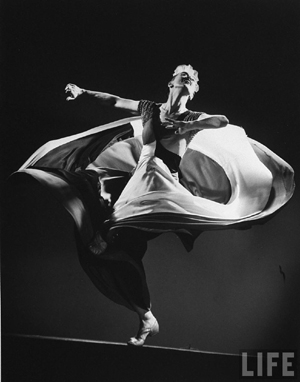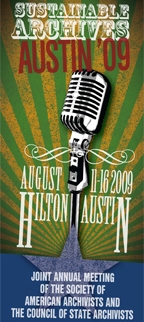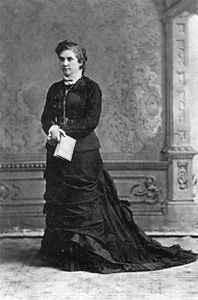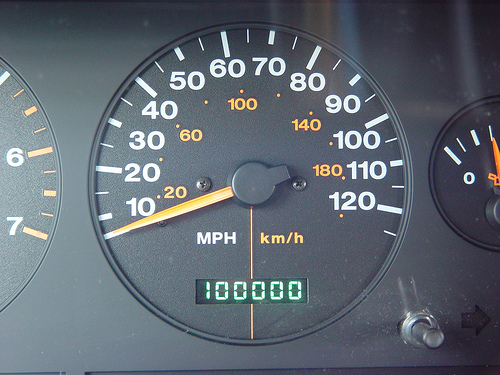 In news that would make any fan of old photographs drool, the Official Google Blog has announced that the LIFE Photo Archive is now available on Google Image Search. The LIFE Photo Archive’s home page is neatly organized to encourage you to browse for images by decade, famous people and topics.
In news that would make any fan of old photographs drool, the Official Google Blog has announced that the LIFE Photo Archive is now available on Google Image Search. The LIFE Photo Archive’s home page is neatly organized to encourage you to browse for images by decade, famous people and topics.
There really is something for everyone here. I picked this striking image of Martha Graham because I love modern dance, but there are also images of war, fashion, sports, landscapes, architecture and tons more. The images currently posted stretch from the 1750s through 2003 and include many that have never before been published.
It is also worth noting that not everything in this collection is a photograph. I found illustrated pages from books like the Queen Summer by Walter Crane. I also found illustrations like this one of the ancient temple of Artemis in Ephesus, Turkey.
From the text in Google’s blog post, it sounds as if Google is doing the digitizing – while LIFE Inc (or their parent company Time Inc) will profit from the sale of prints. The current posted photos represent 20% of all the photos. Ultimately the photo archive is expected to be about 10 million images and stretch to the present day.
 TimeInc has partnered with QOOP to sell framed fine art photographs via links directly from each of the LIFE photo pages within Google. Take a look at the page dedicated to selling you a framed art print of St. Moritz, Switzerland in 1947.
TimeInc has partnered with QOOP to sell framed fine art photographs via links directly from each of the LIFE photo pages within Google. Take a look at the page dedicated to selling you a framed art print of St. Moritz, Switzerland in 1947.
I had not heard of QOOP before, but they seem to have a number of options available for those who want to be their partner. QOOP also wanted me to join their ‘Social Commerce Revolution’. In order to join the revolution I had to create an account (it is free and easy it pointed out). To create my account I had to give them my email address, password and birth date. Not so bad. On the next screen they required that I enter my mailing address and phone number. I don’t really want to give them this information – but I am curious about this revolution I have been promised. And when I was done – a whole lot of nothing happened. I think that I am supposed to use QOOP to create and market products. Is it an affiliate program? Is it an artsier CafePress? Do I need to contribute my own images or can I use those of others? I am still not sure.
I do like their integration with the LIFE images, but I think that there is clearly more work to be done before they are going to foster a ‘Social Commerce Revolution’ anytime soon.
Time Inc’s press release includes the following details:
The LIFE Photo Archive featured on Google will be among the largest professional photography collections on the Web and one of the largest scanning projects ever undertaken. Millions of images have been scanned and made available on Google Image Search today with all 10 million images to be available in the coming months.
“For 70 years, LIFE has been about one thing, and that’s the power of photography to tell a story,” says Andy Blau, LIFE’s President. “LIFE will now reach a broader audience and engage them online with the incredible depth and breadth of the LIFE Photo Archive from serious world events, to Hollywood celebrities to whimsical photographs.” Time Inc. EVP, John Squires adds: “We’re delighted Google recognized the rich value of our photo archive and worked with us to bring it to millions of consumers. Consistent with the launch of the TIME Archive, PEOPLE Archive and the SI Vault, this initiative continues our efforts to build valuable new revenue opportunities from our rich heritage.”
All keywords are translated into 16 different languages. LIFE’s Photo Archive will be scanned and available on Google Image Search free for personal and research purposes. Copyright and ownership of all images will remain with Time Inc.
Google uses a special notation to support search across the LIFE collection – all you do is include source:life as one of your search terms within the Google Image search box. Each photo has a rich set of metadata including a description and the keywords mentioned in the press release above.
When you click on one of the keywords (which are actually called ‘Labels’ in the Google interface) it submits a search within the LIFE collection – but does NOT restrict that search to only the keywords. Rather, it seems to search across all the text associated with each image. For example – the label ‘Feathers’ on assorted images links to this URL: http://images.google.com/images?q=Feathers+source:life. This search returns many images, including one of Debutante Marilyn Lowe wearing a dress made from feathers which is not in fact assigned the label ‘Feathers’, but obviously does include the word feathers in the description.
For those accustomed to hotlinked tag-like terms only retrieving content that also is assigned that term (see all the images in the Flickr Commons tagged with ‘snow’), this might be a bit confusing. Also in contrast with the Flickr Commons, Google does not offer the opportunity for users to assign additional labels/keywords to the images. If you have signed on with a Google account, you can assign images within the LIFE collection a star rating. I don’t see how this is used right now, but I expect that over time they will leverage these ratings to sort the Google hosted image search results.
Since I spend a lot of time these days organizing controlled vocabularies, seeing the keywords assigned to these images makes me wish I could see Time Inc’s full and organized set of terms. My favorite spotted so far? Lines of People – as typified by this photograph of Models wearing checked outfits from 1958.
It will be interesting to see what other partnerships crop up in the next year to digitize other major collections. I am also very curious to know if people actually buy framed fine art prints at the current cost of $79.99 for an 8″x12″ inch print in a 13″x16″ frame. Who knows if Time Inc will be forthcoming with their degree of success on this front – but it will likely be an good test case for other major collections looking to recoup some of the cost of their digitization efforts and find a new revenue stream.
Image Credit: The copyright of both of the images shown above belong to Time Inc. Please click through to view details about each image, including the photographer’s name and the option to purchase your own print of the image.
 It is official – the panel I proposed for SAA 2009 (aka, Sustainable Archives: AUSTIN 2009) was accepted!
It is official – the panel I proposed for SAA 2009 (aka, Sustainable Archives: AUSTIN 2009) was accepted! As part of his portion of our
As part of his portion of our 




